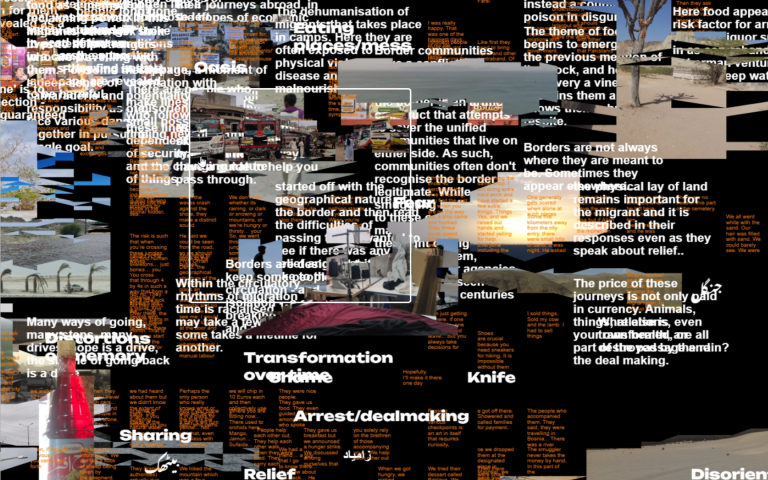Topological Atlas Platform Launch
14 December 2023, 6:00 pm–7:30 pm

Join the team as they present the interactive digital platform 'Topological Atlas' a tool developed to work through our archive of interviews, fieldnotes, observations, documents, maps and images.
This event is free.
Event Information
Open to
- All
Availability
- Yes
Cost
- Free
Organiser
-
UCL Urban Lab
Location
-
UCL Urban RoomUCL East1 Pool StreetLondonE20 2AFUnited Kingdom
Topological Atlas Platform Launch
Join for a presentation of the interactive digital platform 'Topological Atlas'. The architects, designers and researchers behind this work will discuss their methodology and approaches to developing this unique web platform. Focusing on the relationship between architecture and evidence from their experiences working in archives, conducting interviews and coding materials such as fieldnotes, observations, documents, maps and photographs.
How can our research methods and approaches account for the fragmented and circulatory journeys of migration? What kinds of understandings of place, architecture or urbanism might be produced through foregrounding unsettlement? Topological Atlas addressed these questions through the experience of undocumented migration and the functioning of contemporary borders.
On 14 December we will be revealing the Topological Atlas Platform, a tool developed to work through our archive of interviews, fieldnotes, observations, documents, maps and images. The platform tracks threads of meaning across digital artefacts through an evolving visual and textual vocabulary that takes unsettlement and circulation as conceptual approaches towards meaning making.
This event is part of the Undocumented? An Exhibition about Migration on the Edges of Europe currently installed at the UCL Urban Room until 28 February 2024. Co-curated by artist and academic Prof Nishat Awan, Undocumented? explores journeys of migration as a series of situated vignettes from the edges of Europe. It documents lives caught in movement, lives that for those policing the borders of Europe would be better left undocumented, as mere statistics.
 Close
Close

